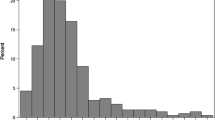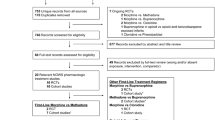Abstract
Objective:
Neonatal abstinence syndrome (NAS) is a drug withdrawal syndrome experienced by opioid-exposed infants. There is no standard treatment for NAS and surveys suggest wide variation in pharmacotherapy for NAS. Our objective was to determine whether different pharmacotherapies for NAS are associated with differences in outcomes and to determine whether pharmacotherapy and outcome vary by hospital.
Study Design:
We used the Pediatric Health Information System Database from 2004 to 2011 to identify a cohort of infants with NAS requiring pharmacotherapy. Mixed effects hierarchical negative binomial models evaluated the association between pharmacotherapy and hospital with length of stay (LOS), length of treatment (LOT) and hospital charges, after adjusting for socioeconomic variables and comorbid clinical conditions.
Result:
Our cohort included 1424 infants with NAS from 14 children’s hospitals. Among hospitals in our sample, six used morphine, six used methadone and two used phenobarbital as primary initial treatment for NAS. In multivariate analysis, when compared with NAS patients initially treated with morphine, infants treated with methadone had shorter LOT (incidence rate ratio (IRR)=0.55; P<0.0001) and LOS (IRR=0.60; P<0.0001). Phenobarbital as a second-line agent was associated with increased LOT (IRR=2.09; P<0.0001), LOS (IRR=1.78; P<0.0001) and higher hospital charges (IRR=1.84; P<0.0001). After controlling for case-mix, hospitals varied in LOT, LOS and hospital charges.
Conclusion:
We found variation in hospital in treatment for NAS among major US children's hospitals. In analyses controlling for possible confounders, methadone as initial treatment was associated with reduced LOT and hospital stay.
This is a preview of subscription content, access via your institution
Access options
Subscribe to this journal
Receive 12 print issues and online access
$259.00 per year
only $21.58 per issue
Buy this article
- Purchase on Springer Link
- Instant access to full article PDF
Prices may be subject to local taxes which are calculated during checkout


Similar content being viewed by others

References
Manchikanti L, Fellows B, Ailinani H, Pampati V . Therapeutic use, abuse, and nonmedical use of opioids: a ten-year perspective. Pain Physician 2010; 13 (5): 401–435.
Centers for Disease Control and Prevention (CDC). Drug overdose deaths—Florida, 2003-2009. MMWR Morb Mortal Wkly Rep 2011; 60 (26): 869–872.
Centers for Disease Control and Prevention (CDC). Vital signs: overdoses of prescription opioid pain relievers—United States, 1999–2008. MMWR Morb Mortal Wkly Rep 2011; 60 (43): 1487–1481.
Creanga AA, Sabel JC, Ko JY, Wasserman CR, Shapiro-Mendoza CK, Taylor P et al. Maternal drug use and its effect on neonates: a population-based study in Washington State. Obstet Gynecol 2012; 119 (5): 924–933.
Epstein RA, Bobo WV, Martin PR, Morrow JA, Wang W, Chandrasekhar R et al. Increasing pregnancy-related use of prescribed opioid analgesics. Ann Epidemiol 2013; 23 (8): 498–503.
Patrick SW, Schumacher RE, Benneyworth BD, Krans EE, McAllister JM, Davis MM . Neonatal abstinence syndrome and associated health care expenditures: United States, 2000-2009. JAMA 2012; 307 (18): 1934–1940.
Hudak ML, Tan RC . Neonatal drug withdrawal. Pediatrics 2012; 129 (2): e540–e560.
Osborn DA, Jeffery HE, Cole MJ . Opiate treatment for opiate withdrawal in newborn infants. Cochrane Database Syst Rev 2010; (10): ) CD002059.
Sarkar S, Donn SM . Management of neonatal abstinence syndrome in neonatal intensive care units: a national survey. J Perinatol 2006; 26 (1): 15–17.
Nandakumar N, Sankar V . What is the best evidence based management of neonatal abstinence syndrome? Arch Dis Child Fetal Neonatal Ed 2006; 91 (6): F463.
O’Grady M, Hopewell J, White M . Management of neonatal abstinence syndrome: a national survey and review of practice. Arch Dis Child Fetal Neonatal Ed 2009; 94: F249–F252.
Moffett B, Valdes S, Kim J . Amiodarone monitoring practices in pediatric hospitals in the United States. Pediatric Cardiol 2013; 34: 1762–1766.
Slaughter J, Stenger M, Reagan P . Variation in the use of diuretic therapy for infants with bronchopulmonary dysplasia. Pediatrics (Evanston) 2013; 131 (4): 716–723.
McLeod L, Keren R, Gerber J, French B, Song L, Sampson N et al. Perioperative antibiotic use for spinal surgery procedures in US children's hospitals. Spine (Phila PA 1976) 2013; 38 (7): 609–616.
Kaplan HC, Tabangin ME, McClendon D, Meinzen-Derr J, Margolis PA, Donovan E . Understanding variation in vitamin A supplementation among NICUs. Pediatrics (Evanston) 2010; 126 (2): e367–e373.
Stenger MR, Slaughter JL, Kelleher K, Shepherd EG, Klebanoff MA, Reagan P et al. Hospital variation in nitric oxide use for premature infants. Pediatrics (Evanston) 2012; 129 (4): e945–e951.
Silber JH RP, Brachet TJ, Ross RN, Bressler LJ, Even-Shoshan O, Lorch SA, Volpp KG . The Hospital Compare mortality model and the volume-outcome relationship. Health services research 2010; 45 (5): 1148–1167.
Ash AS, Schwartz M, Pekoz EA . Comparing outcomes across providers In: Iezzoni L (ed). Risk Adjustment for Measuring Health Outcomes, 3 edn. Health Administration Press: Chicago, IL, USA, 2003 pp 297–333.
International Classification of Diseases, 9th Revision—Clinical Modification. American Medical Association: Chicago, IL, USA, 2008.
Lainwala S, Brown E, Weinschenk N, Blackwell M, Hagadorn J . A retrospective study of length of hospital stay in infants treated for neonatal abstinence syndrome with methadone versus oral morphine preparations. Adv Neonatal Care 2005; 5 (5): 265–272.
Kraft WK, Dysart K, Greenspan JS, Gibson E, Kaltenbach K, Ehrlich ME . Revised dose schema of sublingual buprenorphine in the treatment of the neonatal opioid abstinence syndrome. Addiction 2011; 106 (3): 574–580.
O'Mara K, Gal P, Davanzo C . Treatment of neonatal withdrawal with clonidine after long-term, high-dose maternal use of tramadol. Ann Pharmacother 2010; 44 (7–8): 1342–1344.
Osborn DA, Jeffery HE, Cole MJ . Sedatives for opiate withdrawal in newborn infants. Cochrane Database Syst Rev 2010; (10).
Autret F, Mucignat V, Montgolfier-Aubron ID, Blond M, Ducrocq S, Lebas F et al. [Use of diazepam in the treatment of opioid neonatal abstinence syndrome]. Arch Pediatr 2004; 11 (11): 1308–1313.
Phibbs C, Baker L, Caughey A, Danielsen B, Schmitt S, Phibbs R . Level and volume of neonatal intensive care and mortality in very-low-birth-weight infants. N Engl J Med 2007; 356 (21): 2165–2175.
Agthe AG, Kim GR, Mathias KB, Hendrix CW, Chavez-Valdez R, Jansson L et al. Clonidine as an adjunct therapy to opioids for neonatal abstinence syndrome: a randomized, controlled trial. Pediatrics 2009; 123 (5): e849–e856.
Coyle MG, Ferguson A, Lagasse L, Oh W, Lester B . Diluted tincture of opium (DTO) and phenobarbital versus DTO alone for neonatal opiate withdrawal in term infants. J Pediatr 2002; 140 (5): 561–564.
Localio A, Berlin J, Have TT, Kimmel S . Adjustments for center in multicenter studies: an overview. Ann Intern Med 2001; 135 (2): 112–123.
Dodd S, Bassi A, Bodger K, Williamson P . A comparison of multivariable regression models to analyse cost data. J Eval Clin Practice 2006; 12 (1): 76–86.
Austin PC, Ghali WA, Tu JV . A comparison of several regression models for analysing cost of CABG surgery. Stat Med 2003; 22 (17): 2799–2815.
US Bureau of Labor Statistics. Consumer Price Index. 2010 (cited on 11/5/2010]. Available at http://www.bls.gov/cpi/.
American Academy of Pediatrics: Committee on Drugs. Neonatal drug withdrawal. Pediatrics 1998; 101 (6): 1079–1088.
McCormick MC, Escobar GJ, Zheng Z, Richardson DK . Place of birth and variations in management of late preterm (‘near-term’) infants. Sem Perinatol 2006; 30 (1): 44–47.
Sankaran K, Chien LY, Walker R, Seshia M, Ohlsson A . Variations in mortality rates among Canadian neonatal intensive care units. Can Med Assoc J 2002; 166 (2): 173–178.
Vohr BR, Wright LL, Dusick AM, Perritt R, Poole WK, Tyson JE et al. Center differences and outcomes of extremely low birth weight infants. Pediatrics 2004; 113 (4): 781–789.
Yang F, Tong X MD, Hines RN, Beard DA . Population-based analysis of methadone distribution and metabolism using an age-dependent physiologically based pharmacokinetic model. J Pharmacokinet Pharmacodyn 2006; 33 (4): 485–518.
Methadone. Physicians' Desk Reference 2013 (cited 12 June 2013). Available at http://www.pdr.net/drug-summary/methadone-hydrochloride-injection?druglabelid=1069&id=3154-10.
Morphine Sulfate. Physicians' Desk Reference 2013 (cited 12 June 2013). Available at http://www.pdr.net/drug-summary/morphine-sulfate-oral-solution?druglabelid=1228&id=1189.
Kraft WK, Nan den Anker JN . Pharmacologic management of the opioid neonatal abstinence syndrome. Pediatr Clin North Am 2012; 59 (5): 1147–1165.
Jones HE, Kaltenbach K, Heil SH, Stine SM, Coyle MG, Arria AM et al. Neonatal abstinence syndrome after methadone or buprenorphine exposure. N Engl J Med 2010; 363 (24): 2320–2331.
Burns L, Mattick RP . Using population data to examine the prevalence and correlates of neonatal abstinence syndrome. Drug Alcohol Rev 2007; 26 (5): 487–492.
Cleary BJ, Donnelly J, Strawbridge J, Gallagher PJ, Fahey T, Clarke M, Murphy DJ . Methadone dose and neonatal abstinence syndrome-systematic review and meta-analysis. Addiction 2010; 105 (12): 2071–2084.
Acknowledgements
This study was supported by the Robert Wood Johnson Foundation Clinical Scholars Program.
Author information
Authors and Affiliations
Corresponding author
Ethics declarations
Competing interests
The authors declare no conflict of interest.
Rights and permissions
About this article
Cite this article
Patrick, S., Kaplan, H., Passarella, M. et al. Variation in treatment of neonatal abstinence syndrome in US Children's Hospitals, 2004–2011. J Perinatol 34, 867–872 (2014). https://doi.org/10.1038/jp.2014.114
Received:
Revised:
Accepted:
Published:
Issue Date:
DOI: https://doi.org/10.1038/jp.2014.114
This article is cited by
-
Pragmatic, randomized, blinded trial to shorten pharmacologic treatment of newborns with neonatal opioid withdrawal syndrome (NOWS)
Trials (2023)
-
Association between pharmacologic treatment and hospital utilization at birth among neonatal opioid withdrawal syndrome mother-infant dyads
Journal of Perinatology (2023)
-
Association of medication-assisted treatment and short acting opioids with newborn head circumference and birth weight
Journal of Perinatology (2023)
-
Morphine versus methadone for neonatal opioid withdrawal syndrome: a randomized controlled pilot study
BMC Pediatrics (2022)
-
Disarray in the perinatal management of neonatal abstinence syndrome
Pediatric Research (2022)


